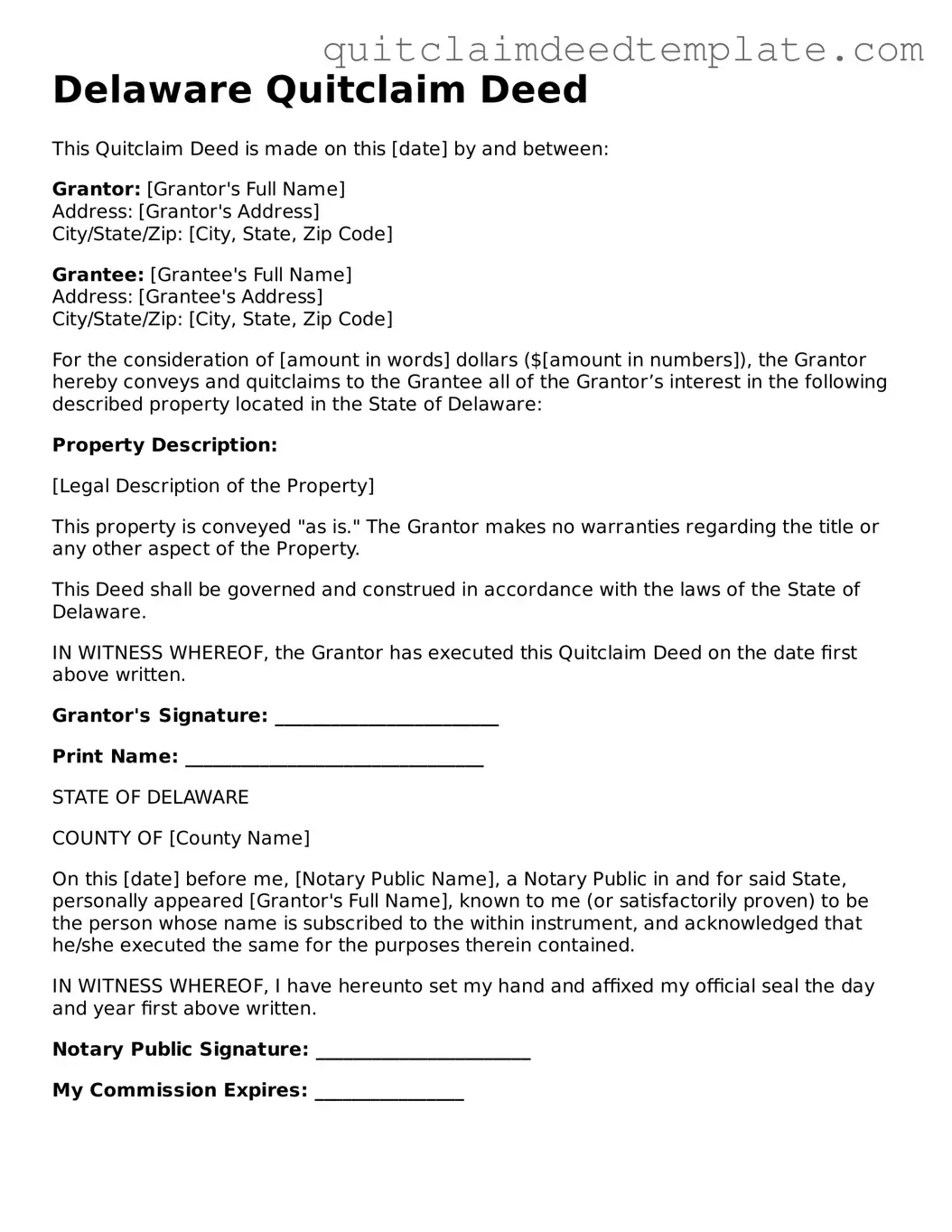Documents used along the form
The Delaware Quitclaim Deed is a document used to transfer ownership of property from one party to another without any warranties. When completing this process, several other forms and documents may also be necessary. Below is a list of common documents often used alongside the Quitclaim Deed.
- Property Title Search: This document provides information about the property’s ownership history and any liens or encumbrances that may exist. It helps ensure that the seller has the right to transfer the property.
- Affidavit of Title: This is a sworn statement by the seller confirming their ownership of the property and that there are no undisclosed liens or claims against it. It serves to protect the buyer.
- Settlement Statement: Also known as a closing statement, this document outlines all the financial details of the transaction, including costs, fees, and the final sale price. It ensures transparency between parties.
- Transfer Tax Declaration: This form is used to report the transfer of property for tax purposes. It helps the state assess any transfer taxes that may be due upon the sale.
- Power of Attorney: If the seller cannot be present to sign the Quitclaim Deed, a Power of Attorney allows another person to act on their behalf. This document must be properly executed to be valid.
- Title Insurance Policy: This document protects the buyer from any future claims against the property that were not discovered during the title search. It provides peace of mind regarding ownership rights.
- Recording Request: After the Quitclaim Deed is signed, this document is submitted to the local recording office to officially record the change in ownership. Recording is essential for legal recognition of the transfer.
These documents help facilitate a smooth property transfer process and protect the interests of all parties involved. It is advisable to review each document carefully to ensure compliance with state laws and regulations.
